Guitar Strings 101: Everything You Need to Know Before Buying
Posted by juststrings.com on Nov 11th 2024
Hello guitar players! Are you struggling to buy the best guitar strings for your favorite guitar? Are you overwhelmed by the number of options available? Don’t worry. We’ve done a little research to help you out.
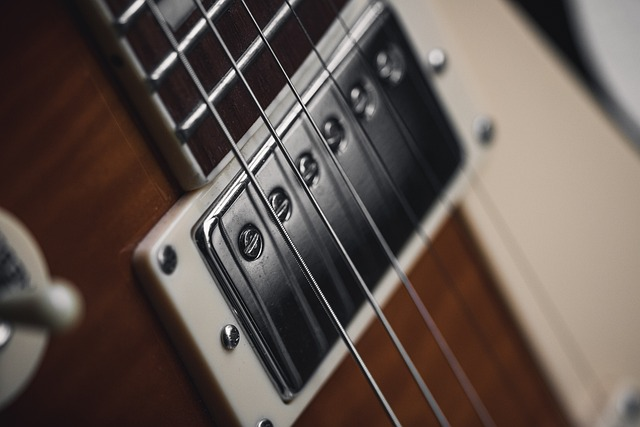
Here, we will tell you how you can find the most appropriate strings for you and your guitar. There are a few factors which you need to pay attention to.
Type of Guitar You Own
The type of guitar you’re re-stringing is the first and most important factor to consider while looking for guitar strings. You need to match the type of guitar you have to the strings you’re looking for.
Choosing the right string for the guitar you have is necessary to make everything work properly. If you use acoustic guitar strings on your classical guitar, then it will not only affect the sound but will likely also damage your precious instrument.
So, let’s see what strings go best with the most popular guitar types today. Acoustic Guitars, Electric Guitars, and Classical Guitars all use different strings. In case you can’t 100% identify your guitar type, you can always get help at your local shop.
Electric Guitar
Electric guitars are easy to identify. They generally have solid bodies and electronic pickups. However, there are many factors that affect the type of strings they can use. Electric guitar strings not only vary in size but also materials. You want to make sure you are going with the right string materials so your guitar will play and sound like you expect. Most electric guitars use 3 plain steel treble strings and 3 wound bass strings.
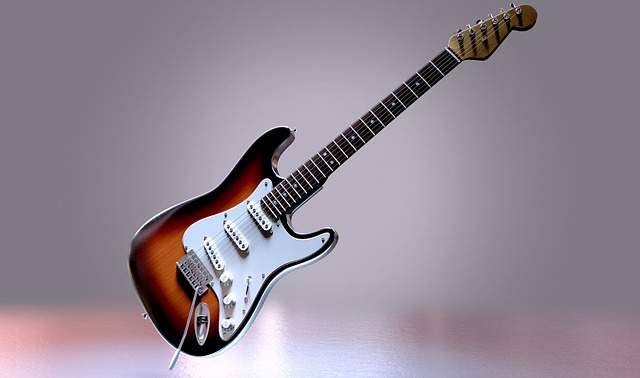
Acoustic Guitar
If your guitar is big, hollow, with a natural wood finish, it is almost certainly an acoustic guitar. Acoustic guitar strings are almost always bronze roundwound. If the top two strings of your guitar are plain steel and the rest (3rd to 6th) are either golden or copper colored, then those are acoustic guitar strings.
Classical Guitar
Classical guitars generally have nylon strings for a slightly softer, more classic sound. Generally speaking, you do NOT want to use Acoustic or Electric guitar strings on your Classical guitar because the steel cores of these strings will be much higher tension than your instrument is designed for. You will damage your Classical guitar if you string it with steel strings, whether sooner or later.
These guitars require flexible nylon strings (mimicking traditional gut strings in feel and sound) to produce the tones needed for classical music. Nylon strings are much lower tension than similarly tuned steel strings.
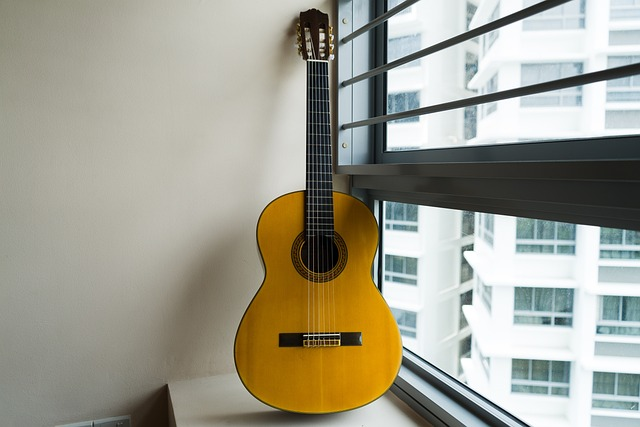
Important Factors Related to String Manufacturing
The type of string you need for your guitar can not only be determined by the type of guitar you have. This surely plays a major role, but there are many other factors that you need to consider.
The following are some factors related to the construction of guitar strings. These all affect the type of sound you get from your guitar and thus become important considerations when choosing the right guitar strings.
String Gauge
Gauge is simply the diameter of the string. The bigger the diameter, the heavier the string. As the string gets heavier, it requires more tension and becomes harder to fret. The gauge of a string set is distinctly related to the type of guitar it’s meant for: Acoustic Guitars generally use heavier gauge strings than Electric Guitars, while Classical Guitar strings are generally categorized by tension rather than gauge.
The type of music you like to play and your experience with the guitar will also influence the string gauge you’re likely to prefer. Let’s take a look at the different types of gauges you can find across the guitar string spectrum.
Light or Extra Light Gauge
Light gauge guitar strings are thinner, making them more flexible and easier to play and bend. This makes them a popular choice for rock, classic rock, and metal musicians who like to play fast and bend a lot to show expression through the guitar. Light gauge strings are also often a good choice for beginners as their fingers are not yet trained for the instrument.
One potential drawback of lighter gauge strings is that their thinner gauge makes them prone to easy breakage. They may wear out more quickly than heavier strings depending on your playing style. However, it is important to note that most electric guitar players in the modern (1970s – present) era have used light or extra light strings. Try light strings, and if you like them, then stick with them!
Tip: Try different sets and gauges of strings and record your experience. This can help you dial in the perfect strings for you and your sound.
Medium Gauge
These strings are a balance between thinner and thicker gauge strings. They are highly versatile and thus can be used to play a variety of music. Generally speaking, you’ll get more sustain and tone out of a medium gauge string than a lighter gauge string. They are, however, correspondingly more difficult to fret and play than lighter strings. Keep this in mind. It may be that you prefer the greater volume and sustain that can be had with medium gauges.
Heavy Gauge
Heavy gauges come with thicker diameters which makes them more difficult to fret. This is one downside, though the massively increased volume and sustain that can be had from heavy gauge strings may bring you to give them a try. They also frequently last longer than lighter varieties in that they are least likely to break under heavy or vigorous playing. They are made for producing powerful sounds for jazz, blues, or bluegrass. If you gravitate to play these types of music, then heavy strings may be the right option for you.
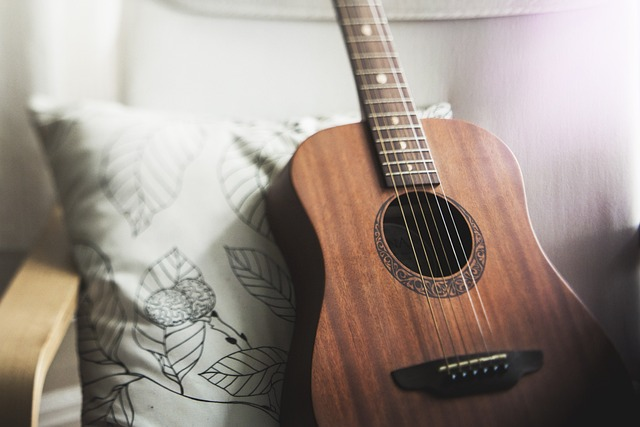
Plain vs. Wound Strings
There are two main different types of guitar strings: Plain and Wound. Plain strings are made with one single wire while the wound strings are constructed with a plain core and a wound wire wrap around the core.
Core Types
Guitar string cores are generally of two types: hex core and round core. These core types react differently to strumming and picking and create different dynamics that you might or might not prefer for your playing style.
- Hex Core
- These feature a hexagonal-cylindrical shaped core wire. This design prevents the slipping of the winding wire on the core and can provide greater stability compared to round cores.
- Round Core
- These feature a cylindrical shaped core wire with a smooth, round surface. They provide maximum contact between the core and the winding material. These are considered a more “vintage” string construction and can be of great help in re-creating classic guitar sounds of the 40s-60s.
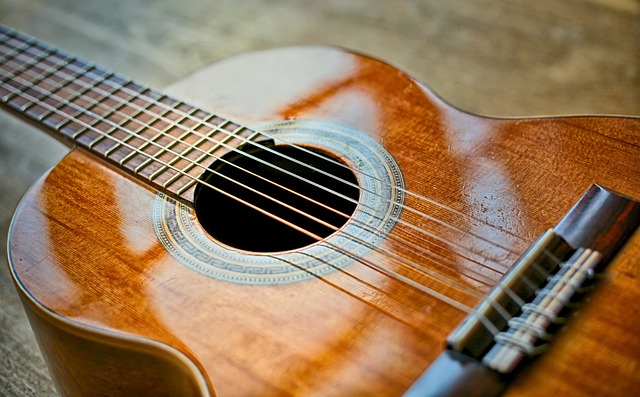
Winding Types
There are a few main winding types for guitar strings: Round Wound, Flat Wound, and Half Round. They all feel and sound different and are ideal for different guitar/playing situations.
- Round Wound Strings
- This is the basic winding type. It consists of a round wrap wire wound around either a hex (more common) or round (less common) core wire. This is your “standard” guitar string. They tend to be bright, and provide a well-rounded sound with good highs, mids, and lows.
- Flat Wound Strings
- In this winding type, the wire is flattened into a ribbon shape before being wrapped tightly around the core. It offers a shallower profile and smoother string. It also reduces squeaking sound which can be a concern with round wounds. Flat Wounds provide a bass-forward, warm sound that is ideal for classic Jazz and early Rock n’ Roll playing. Most of your favorite Jazz players play or played flat wound strings.
- Half Wound Strings
- This winding type is sort of a half-way compromise between a round wound and a flat wound string. A round wrap wire is wrapped around the core wire and is then flattened with special machinery to get the benefits of a flat wound with much of the sound and tone of a round wound. Half Wound (or half round) strings can be a good middle ground if you are looking for the best of both worlds.

String Materials
The different types of materials that are used to make guitar strings also go hand in hand with the type of guitar they go on and the kind of music you like to make. Following, we will discuss different types of winding materials that you can choose while buying guitar strings. So, let’s move forward!
Tip: Save the packaging of the latest set of strings that you bought. This will help you get the same set of strings in the future or help you know what you don’t want if you are looking to try something new!
Winding Material
Winding material affects the sound a guitar makes. It also affects the mass, thickness, and tension of the string. Let’s see what different winding materials you can choose for your guitar.
- Phosphor Bronze: the modern standard for acoustic guitar. Warm, with an even top end brightness. Long lasting tone.
- 80/20 Bronze: the traditional standard for acoustic guitar. Bright, with high-shining mids and highs. Very bright at first, but after 10-20 hours of playing, tending to settle down to a warmer, longer lasting tone.
- Nickel-Plated Steel: the modern standard for electric guitar. Bright, even highs and mid-range. Long lasting tone. The string that most of your favorite rock songs have been recorded with.
- Stainless Steel: a higher-output electric string. Popular with 80s guitarists looking for maximum output and hugely bright tone.
- Black Nylon: great for jazz. The warmest of tones. Also, exceptionally long lasting due to the nylon wrap preventing string corrosion. Popular with electric bassists as well.
- Silver-Plated Nylon: the standard for classical guitar. These provide a beautiful, bright tone for classical instruments that cannot be matched be other string types.
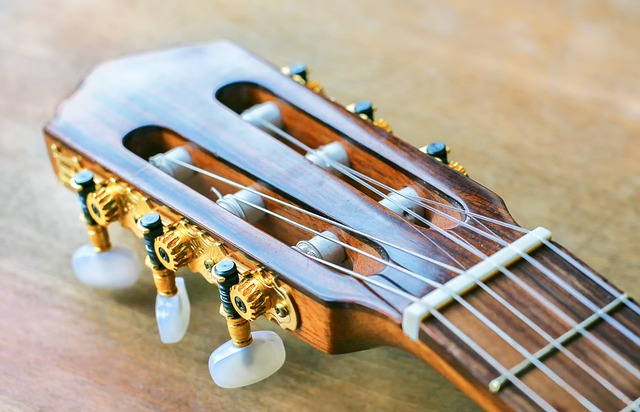
Coated Strings
A relatively new development in string technology (within the last 25-30 years) are coated strings. A coating material can help protect strings from corrosion and other wear and tear. It helps with keeping dirt and grime at bay and keeps your strings safe.
They also affect the sound that the string produces. Different coating types produce different tones and are best suited to different types of music. You will be best served by trying several coated strings and choosing the one that matches your playing style.

Bottom Line
Choosing the right string type for your guitar is super important. With the right strings, you can play the right music. The wrong strings are just going to frustrate you. When you are just starting out, the best approach is to try a few different string types, brands, and gauges. You’ll quickly zero in on what you like.
As always, please reach out to the team at JustStrings.com with any questions and we can help guide you to find the perfect string for you and your guitar!
